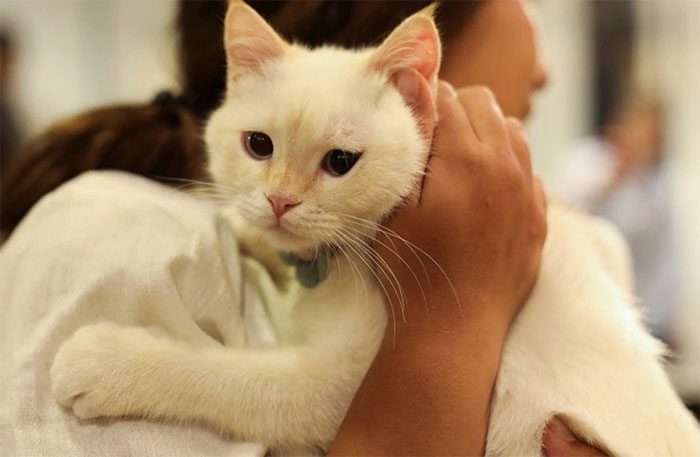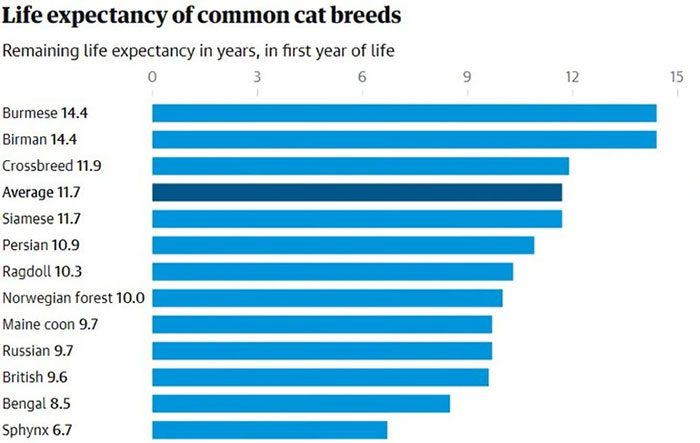According to the latest research, the expected remaining lifespan of cats after their first year is 11.7 years.
As reported by the Guardian, a team of researchers from the Royal Veterinary College (RVC) in the UK and National Chung Hsing University in Taiwan analyzed data from 7,936 cats registered with veterinary services in the UK that died between January 1, 2019, and March 31, 2021, to calculate their expected lifespan.

The study found that mixed-breed cats live longer than purebred cats – (Photo: REUTERS).
Overall, the expected remaining lifespan of cats after their first year is 11.7 years. Females generally live longer (12.5 years) compared to males (11.2 years).
Among the breeds, the Sphynx cat has the shortest lifespan, with an expected remaining lifespan after the first year of only 6.7 years. This may be related to their susceptibility to various health issues.
In contrast, the Burmese and Birman cats can live more than 14 years; Siamese cats can live an additional 11.7 years, while Bengal cats can live an additional 8.5 years.
The research team found that mixed breeds (which make up 88% of the cats studied) have a higher lifespan than purebreds. Specifically, mixed-breed cats have an average remaining lifespan of 11.9 years compared to 10.4 years for purebreds.

Projected lifespan chart of some popular cat breeds based on data from 7,936 cats registered with veterinary services in the UK – (Source: VetCompass/Graphic: Guardian).
Mr. Dan O’Neill, a co-author of the study and a researcher at RVC, stated that the differences mentioned are significant. He noted that if cat owners want their pets to live a bit longer, they now have evidence to consider adopting a female, mixed-breed cat.
Additionally, cats that are not spayed or neutered tend to have shorter lifespans, while those with average weight live longer than both heavier or lighter cats.
Mr. O’Neill mentioned that the study provides cat lovers with a tool to understand and predict their cats’ future lifespan. This is also important for prospective owners, charities, and veterinarians.
At the same time, the research helps those considering the costs of medical care or potentially expensive and painful surgeries for their cats.


















































